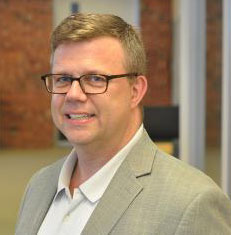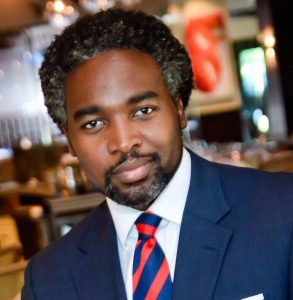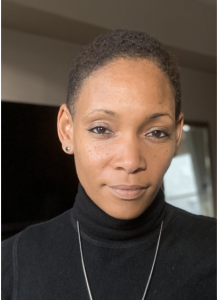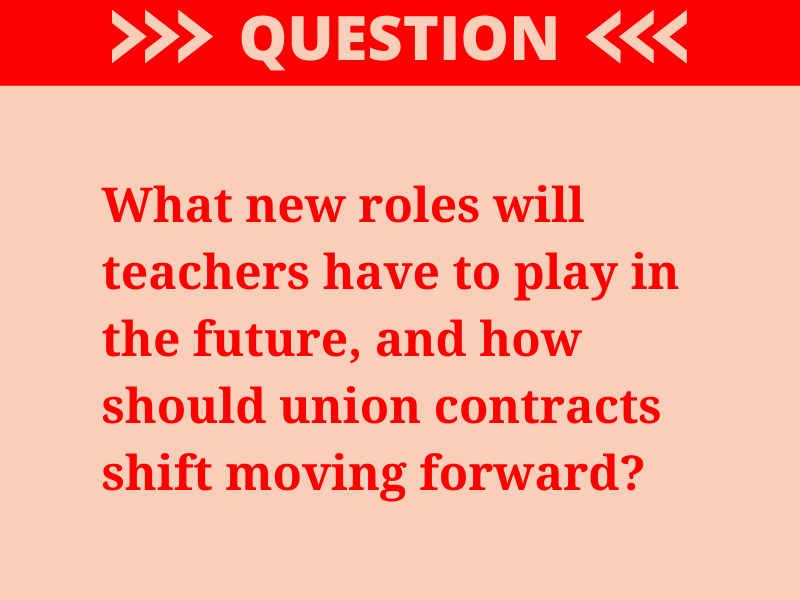Reality Check: What Will It Take to Reopen Schools Amid the Pandemic? 5 Experts Weigh In on What New Roles Teachers Should Play

This is the fifth in a series of invited responses to some of the big, unanswered questions facing America’s schools as they prepare to reopen in the fall. The Center on Reinventing Public Education, in partnership with The 74, fielded responses from a diverse roster of educators and policymakers in order to promote creative thinking and debate about how we can collectively meet student needs in an extraordinarily challenging school year, and beyond. You can see previous installments here.
Teachers and teachers unions may not want the same things
By Derrell Bradford
 The challenges of remote learning aside, it has given us the opportunity to put more and more people in front of students who are both uniquely good at teaching online and uniquely skilled at their specific content area. Some school systems like Success Academy Charter Schools and the National Summer School Institute have used a “one to many” approach to remote learning, where master teachers engage with a larger classroom of students and less experienced teachers, or those who work better with small groups, provide more individualized supports.
The challenges of remote learning aside, it has given us the opportunity to put more and more people in front of students who are both uniquely good at teaching online and uniquely skilled at their specific content area. Some school systems like Success Academy Charter Schools and the National Summer School Institute have used a “one to many” approach to remote learning, where master teachers engage with a larger classroom of students and less experienced teachers, or those who work better with small groups, provide more individualized supports.
Put differently, more kids can now get the best teacher. This places tremendous stress on teachers unions because the scale at which people can see excellence unravels their argument that all teachers are essentially equal.
Unfortunately, and already, we’ve seen teachers unions move to prevent this promising model and other staffing innovations from taking hold in school districts. They have enacted job protections that basically make distance learning optional (which makes the teacher scarce) and that limit the time teachers are required to teach (which drives up their price of their labor).
It’s pretty clear the teachers unions see this as a huge economic opportunity first (as the need to reopen schools gives them leverage over policymakers), and that surmounting the instructional challenges, though probably really important to many teachers, is pretty far down the list for their unions.
Derrell Bradford is executive vice president of 50CAN.
Teacher roles must shift to support personalization
By Paul Toner
 To be successful in this new environment, we need to move to a more student-centered system that supports personalized learning. This will require reimagining the role of teachers and learners. We must rethink our school infrastructure, including contracts, job descriptions, calendars and schedules. We need to recognize that students learn 24/7 in formal and informal settings. We should eliminate age-based cohort structures and implement a competency-based education system. We must measure actual learning, not rote memorization and seat time. Assessments should measure mastery of skills and content — but also creativity, critical thinking, collaboration and communication skills. Technology is an important tool, but critical to mastery is the idea that learning is social, and it requires applying it in context.
To be successful in this new environment, we need to move to a more student-centered system that supports personalized learning. This will require reimagining the role of teachers and learners. We must rethink our school infrastructure, including contracts, job descriptions, calendars and schedules. We need to recognize that students learn 24/7 in formal and informal settings. We should eliminate age-based cohort structures and implement a competency-based education system. We must measure actual learning, not rote memorization and seat time. Assessments should measure mastery of skills and content — but also creativity, critical thinking, collaboration and communication skills. Technology is an important tool, but critical to mastery is the idea that learning is social, and it requires applying it in context.
A shift toward such a student-centered, personalized learning environment will require educators to become facilitators of the process rather than lecturers and keepers of content knowledge. They will need to closely partner with students and parents as advisers to support them in creating individual learning plans and pathways for lifelong success. This will require collaboration among district and school leaders, school board members, union representatives and classroom educators as they rethink collective bargaining agreements, district policies and long-held notions of schooling.
Teacher contract language must be flexible in order to quickly address shifts in the learning environment and support new approaches to delivering instruction as they emerge. There must be more time in the school calendar and a restructuring of the school day to meet the needs of students and families and to provide teachers with time for professional development, collaboration with peers, planning time, family engagement and student advising.
This is a big challenge; however, it is possible. It will require openness to new ways of delivering education and strong collaboration between district management and unions. The willingness to adjust and be fluid with decisions based on student, teacher and parent needs will require trust and effective communication among all stakeholders. These steps will help to ensure that all district employees are engaged in creating a new vision for our schools.
Our experiences during the pandemic have made it clear that it is necessary to move in this direction if we want to provide all students with a high-quality education and a chance for success in school and life.
Paul Toner is senior director of national policy, partnerships and northeast region at Teach Plus.
We need to make teachers’ — and school systems’ — jobs more manageable
By A.J. Crabill
 The current crisis has revealed how underappreciated our nation’s teachers have been — which could be a catalyst for change.
The current crisis has revealed how underappreciated our nation’s teachers have been — which could be a catalyst for change.
My aspiration is that teachers should have less that takes their time away from the core work of teaching. Both as a resource-saving and a teacher-saving exercise, school systems should exit as many non-core functions as possible.
Why are teachers expected to be therapists or counselors? Find partners for whom that is their area of expertise.
Why are teachers expected to be athletic coaches? Find community partners who can provide afterschool competitive athletics.
Why are teachers expected to be lunch monitors? Find a food services partner who takes responsibility for both the kitchen and the cafeteria.
Why are teachers expected to search the internet for instructional materials, or pay for books and supplies on their own? Provide teachers with a strong curriculum and instructional materials that they can improve upon if they want to, but not because they need to.
School systems shouldn’t need to be doing these things either — unless they want to. District central offices can run more leanly with partners carrying more of the load. That frees up school systems to focus on growing the ability of teachers to support student learning, and it frees up teachers to focus on student learning as their core contribution to the well-being of children.
The most important new role for teachers involves their own self-care
By Cynthia Robinson-Rivers
 How will teachers be able to address the academic gaps and emotional needs of their students after returning to school during a pandemic? It is nearly impossible without addressing those same teachers’ socioemotional and physical health needs first.
How will teachers be able to address the academic gaps and emotional needs of their students after returning to school during a pandemic? It is nearly impossible without addressing those same teachers’ socioemotional and physical health needs first.
Teachers will have to become managers and caretakers of their own needs to ensure that they have the capacity and emotional constancy to support the students in their care. I see this as a new role teachers will have to play — caring for themselves so they can take care of students during a stressful and uncertain time. It’s time for school leaders like me to make self-care a reality, rather than a buzzword, by carving out time within daily schedules for teacher wellness and leveraging community resources for mental health supports for teachers, not just for students.
What could this look like at a real school? Here’s how I’m planning for it to look at mine next year: We will have a schedule that allows for frequent teacher breaks, physical activity for students and teachers woven throughout the day, an on-site clinical psychologist working with teachers one day each week, yoga instruction for staff, students and families, and spaces in the building — in addition to the teachers’ lounge — where teachers can have mindful moments and de-stress. We will have adequate protective equipment and adhere to health and safety guidelines, and we are providing opportunities for educators to focus on self-care in professional development sessions.
Flexibility will be critically important this upcoming school year, with many unknowns and a constantly changing public health landscape. Creating shorter, more frequent breaks, for example, requires creative master scheduling and a potentially unorthodox staffing structure that allows for time to address students’ academic needs while also prioritizing teacher wellness.
Parents and other teacher advocates can join districts to make teacher well-being and alternative schedules a priority, so both students and teachers are able to thrive.
Cynthia Robinson-Rivers is head of school at Van Ness Elementary, part of D.C. Public Schools.
Put the supports in place that allow teachers to teach
By Evan Stone
 Systemic inequity is not a new problem in our society or schools, but it is one that the COVID-19 pandemic and recent, horrific examples of racial injustice have placed at the forefront of the public’s attention. Education policy, union contracts and teaching need to change to meet these challenges.
Systemic inequity is not a new problem in our society or schools, but it is one that the COVID-19 pandemic and recent, horrific examples of racial injustice have placed at the forefront of the public’s attention. Education policy, union contracts and teaching need to change to meet these challenges.
Educators have long called for more equitable resources, but the results of our most recent national teacher survey show that our most vulnerable students are in danger of losing access to their education entirely. Teachers who serve predominantly low-income communities were far more likely to report that their students did not have access to the requisite tools and resources, like stable internet connections and computers, to continue learning during the pandemic. And nearly half of these teachers reported daily student participation rates of under 50 percent, compared with just 16 percent of teachers who serve far fewer low-income students.
Similarly, the urgency of the moment requires policy changes to ensure that students feel safe and supported by removing police from schools and moving more quickly to diversify the teaching workforce.
In addition to policy changes, contracts need to be reimagined to set baseline expectations for virtual learning by prioritizing more time for academic instruction, social-emotional support and student outreach. More flexible contracts could allow shifts in teachers’ roles and responsibilities, as well as better meet the needs of historically marginalized students and communities.
Contracts should also provide clear opportunities for teachers to increase their compensation for taking on additional work, serving vulnerable populations of students and helping to lead necessary shifts in their schools. A one-size-fits-all contract that dictates how teachers spend their day and limits flexibility won’t allow for the constant innovation that is required.
Teacher contracts should move away from a seniority-first structure to one that values performance and focuses on ensuring that services for the most vulnerable students are protected. New agreements should mandate that students have access to the resources they need, not just to get online but to continue learning, if schools are closed. They should provide teachers and students with safety protections like sanitized buildings, access to protective equipment, and simple things that have historically been difficult, like ensuring that all bathrooms have soap.
With supports like these in place, teachers can focus on delivering a culturally responsive and rigorous curriculum in person, virtually or both.
Evan Stone is co-chief executive officer and co-founder of Educators for Excellence (E4E).
Get stories like these delivered straight to your inbox. Sign up for The 74 Newsletter

;)
